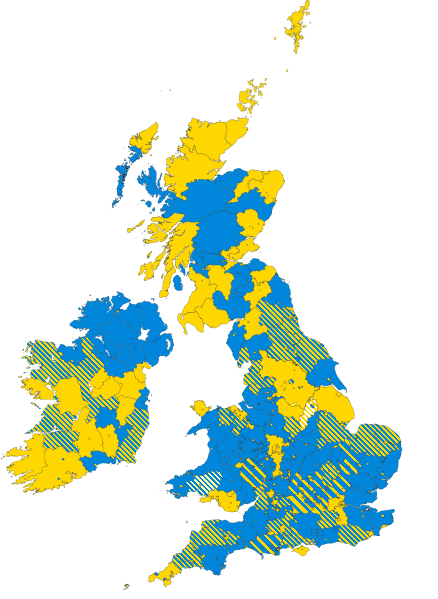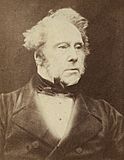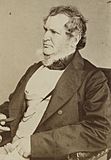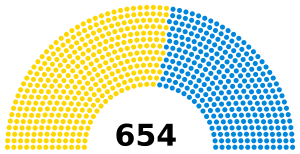1859 United Kingdom general election facts for kids
|
||||||||||||||||||||||||||||||||||
|
|
||||||||||||||||||||||||||||||||||
|
All 654 seats in the House of Commons 328 seats needed for a majority |
||||||||||||||||||||||||||||||||||
|---|---|---|---|---|---|---|---|---|---|---|---|---|---|---|---|---|---|---|---|---|---|---|---|---|---|---|---|---|---|---|---|---|---|---|
|
||||||||||||||||||||||||||||||||||

Colours denote the winning party—as shown in 1859 United Kingdom general election § Notes
|
||||||||||||||||||||||||||||||||||
|
||||||||||||||||||||||||||||||||||
The 1859 United Kingdom general election was a time when people across the country voted for their representatives. These representatives would then sit in the House of Commons, which is a part of the UK Parliament.
In this election, no single political party won enough seats to have a clear majority on its own. The Earl of Derby's Conservatives formed a government, but they did not have enough support from other parties. This is called a minority government. Even though the Conservatives gained more seats overall, their government was soon defeated.
This happened because different groups teamed up against them. These groups included Palmerston's Whigs, along with other politicians known as Peelites, Radicals, and the Irish Brigade. They voted against the Conservative government in something called a confidence vote. When a government loses a confidence vote, it usually means they have to step down.
After this, Palmerston formed a new government. This new group was made up of the Whigs and their allies. Historians now see this as the very first government of the Liberal Party.
This election was also the last one where the Chartists took part. The Chartists were a group of people who wanted more rights for ordinary working people, like the right to vote for all men. Their organization ended after this election.
Understanding the Election Results
The election results show how many votes and seats each political party won. This helps us understand who had the most support from the public.
| 1859 United Kingdom General Election Summary | |||||||||||||||
|---|---|---|---|---|---|---|---|---|---|---|---|---|---|---|---|
| Party | Candidates | Votes | |||||||||||||
| Stood | Elected | Gained | Unseated | Net | % of total | % | No. | Net % | |||||||
| Liberal | 465 | 356 | −21 | 54.43 | 65.80 | 372,117 | −0.2 | ||||||||
| Conservative | 394 | 298 | +34 | 45.57 | 34.17 | 193,232 | +0.3 | ||||||||
| Chartist | 1 | 0 | 0 | 0 | 0 | 0 | 0.03 | 151 | −0.1 | ||||||
Who Were the Peelites?
The Peelites were a group of politicians who were originally Conservatives. They supported Free trade, which means they believed in allowing goods to be bought and sold between countries without special taxes. They didn't act as a single, organized party during elections. Instead, they were more like independent Conservatives who had different opinions from the main Conservative and Whig parties.
A Quiet Election
The 1859 election was one of the quietest and least competitive elections between 1832 and 1885. In many areas, especially in the counties, candidates ran without anyone opposing them. This means they won their seats without needing a vote. This election also had the fewest candidates running for office during that time. Some historians think that the Conservative Party gained more seats not because public opinion changed a lot, but simply because there wasn't much competition.
See Also
- List of MPs elected in the 1859 United Kingdom general election
- 1859 United Kingdom general election in Ireland




